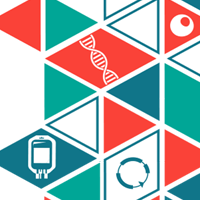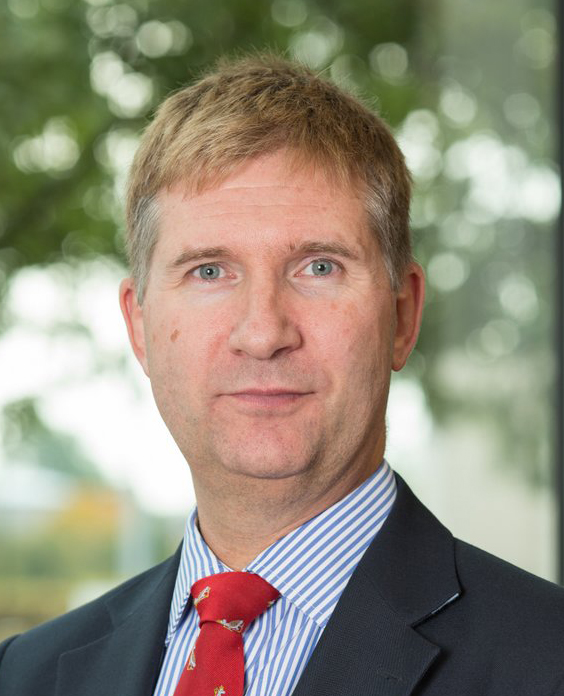Strimvelis: learnings from a cell and gene therapy forerunner
Cell Gene Therapy Insights 2016; 2(3), 397-401.
10.18609/cgti.2016.045
GSK received European Marketing Authorisation earlier this year for Strimvelis, the first ex-vivo stem cell gene therapy to treat patients with ADA-SCID. Can you tell us a little about the history of Strimvelis?
Strimvelis was developed in close collaboration with our partners at the Telethon Foundation and Hospital San Raffaele – acting
through their Telethon Institute of Gene Therapy (TIGET). This was part of a collaboration which started originally in 2010 at which stage the Telethon institute had already carried out a fair amount of the non clinical work to support the activities and work that would go in to developing the product. When we started the relationship with them, we were able to bring our knowledge and expertise of taking a product through the regulatory process as well as optimizing and standardizing a manufacturing process that was previously only suitable for clinical trials. We found that our skills were complimentary and so we were able to form a close team and work very effectively on moving this product through development. The manufacturing part was then carried out under contract with MolMed with whom we have partnered.
As more cell and gene therapies near the market, there’s a great deal of discussion and debate regarding the price tag for these products. What was GSK’s approach to reimbursement for Strimvelis?
Reimbursement is a very interesting topic particularly within the European Union given where the price of Glybera, the first gene therapy approved, has attracted a lot of negative attention. In pricing Strimvelis, we took a number of things into account when we thought about pricing. Our goal has been to make the one-time treatment cost for the medicine affordable to healthcare systems through established payer mechanisms to ensure that European patients with this ultra-rare disease can benefit and access treatment. We believe the price of 594,000 Euros which we proposed and which was approved for reimbursement, reflects this commitment. At this price we do not expect to make a return on our investment in Strimvelis. For GSK, this is just the beginning, the real foundation and so we don’t expect to make money out of this product and that’s something that’s accepted throughout the company, but this allows us to build the expertise to develop new products which will be enable us to help more patients in the future.
Initially patients will be treated at the Ospedale San Raffaele in Italy where their gene therapy will be manufactured and administered. How did this treatment model impact the pricing discussions?
As with a bone marrow transplant, there are additional costs associated with the treatment of Strimvelis. These include the hospital costs at the Ospedale San Raffaele, Milan, where the child will stay while undergoing treatment, and the need for some or all of the family to relocate to Milan for the duration of the pre-treatment, treatment and follow up period. These costs will vary depending on the patient and their home location.
How does it work in terms of supporting patients with their travel and when they are on site – hospitalization costs for example?
The San Raffaele hospital together with the Telethon Foundation has created a patient concierge service whereby patients are supported in terms of travel and accommodation. Specialist accommodation is required for these patients as they are severely immunocompromised, and they might also require support in terms of translators for the clinicians if they do not speak Italian for example. If families require financial help with these aspects, they can apply for some funding through the Telethon Foundation.
There’s also a lot of discussion around different possible reimbursement models – including this often used term ‘money back guarantees” for these new therapies. What are your thoughts on this?
The money back guarantee that’s been discussed widely in the press is somewhat of a misnomer. Essentially AIFA, the Italian reimbursement body which specifically negotiates the price has got a process in place where by advanced therapies including oncology products already have some form of partial reimbursement based on certain criteria that if a product is shown not to work as it should, then there is a degree of money back. So there is no specific money back guarantee but it is a partial refund mechanism and this is nothing new for the Italian government. We simply fitted in with it, there are no changes around it for Strimvelis. We have publicly stated we are more than happy to discuss alternative payment mechanisms with different reimbursement agencies and these may include anything around different payment options such as payment by results, amortization, centre of excellence approaches, so there is a variety of different mechanisms that we are more than happy to discuss particularly for ongoing indications, not necessarily for Strimvelis, because it is such a small niche indication.
It’s going to be very interesting to see how this all plays out and I imagine there will be a variety of models adopted, depending on the company, the product and the market. I think even for the reimbursement agencies it’s a fascinating challenge because many of them are not used to some form of amortization mortgage-type payment and so they don’t have the processes in place or the mechanics to be able to do it either so it will be very interesting.
What challenges and benefits arise from this novel model of central manufacturing and central treatment?
I think the benefits are significant: we have a clinical team that is extremely familiar with and specialized in the product and experienced working with ADA-SCID. We have a lot of faith in them as they have developed the product and arguably at the moment the best group to able to administer it. In terms of the manufacturing effort, the product has a short shelf life currently and so having a manufacturing facility in close proximity to the treating hospital makes this step simple. Where challenges arise, first and foremost, is that patients are required to travel and they are required to stay in Milan for a number of weeks whilst undergoing treatment and this can be very challenging for a young family with a young child. We’re incredibly sensitive to that and to the fact that we need to make this product available closer to their homes. Having their families closer will greatly impact the patients and their ability to heal. Therefore, the key driver for us is to ensure that we are able to develop this product and all of the future products with longer shelf lives, so we are able to make them available to patients closer to home.
Is the intention to move to a more distributed model in future for Strimvelis or to replicate this centralized approach but in different geographical territories?
Yes, the primary driver at the moment particularly for ADA-SCID is that we will develop the longer shelf life that will allow us to treat patients around the world, much closer to their home using a centre of excellence approach. At the moment there is no plan for Strimvelis to be manufactured in smaller manufacturing sites. When we move to the other products which are all lentivirus, what we will look at is a hub-and-spoke manufacturing mechanism whereby we have a manufacturing facility based in a region and then we will be able to ship out to hospitals in that region.
What do you see as the key challenges in moving from ultra-rare to more common indications?
This is a very interesting area – our cell and gene therapy unit sits within the rare diseases group within GSK, and the aim of the rare diseases group is to leverage the learnings of the disease mechanisms of orphan and ultra-orphan indications, to be able to provide patients with a good quality medicinal product to meet the high unmet medical need and also to be able to learn to take those therapies and those approaches into much more common indications. From a cell and gene therapy perspective this is exactly what we are doing. So at the moment we are learning a lot from the ADA-SCID and Strimvelis experience about how to develop and commercialize an ex vivo cell and gene therapy.
We’re focusing at the moment on CD34 cells and moving forward we will also be focusing on lentivirus vectors; and so using those two streams will allow us to start scaling up and treating more patients. Gene therapy is a relatively new area of medicine using the patient’s own cells. We are applying the knowledge and expertise we have gathered during the development of Strimvelis to our other indications currently in development for Metachromatic Leukodystrophy and Wiskott-Aldrich Syndrome. To this end, we want to broaden access of these potential new medicines at the outset so are exploring different manufacturing options and regulatory pathways to enable this. As part of that, we work very closely with our manufacturing colleagues in order to develop our expertise and we are constantly looking at ways to grow our in-house capabilities. This is across a range of facets: whether it be in assay testing, viral vector manufacturing scale up, registries, or developing our expertise in regulation. We’ve developed a good understanding of how to design clinical studies for example in which you are looking at specific short-term endpoints, say 2-3 years, and you need to then translate that into something that will be applicable for a life time. The reimbursement approach whereby you are treating a patient once for the rest of their life is something that is very new within our healthcare organisations. So we are using these smaller indications as a starting point and as we potentially move into the bigger indications such as beta thalassemia, we’ll have a much stronger background and capabilities to be able to make difference to patients’ lives much faster and create a sustainable business. GSK has put a lot of emphasis behind cell and gene therapy and has publicly stated that it is an additional pillar of the company – joining small molecules, large molecules and vaccines. We really feel we’re developing this long term capability and expertise.
Affiliation
Dr Sven Kili, VP and Head of Cell & Gene Therapy Development, Rare Disease Unit, GSK

